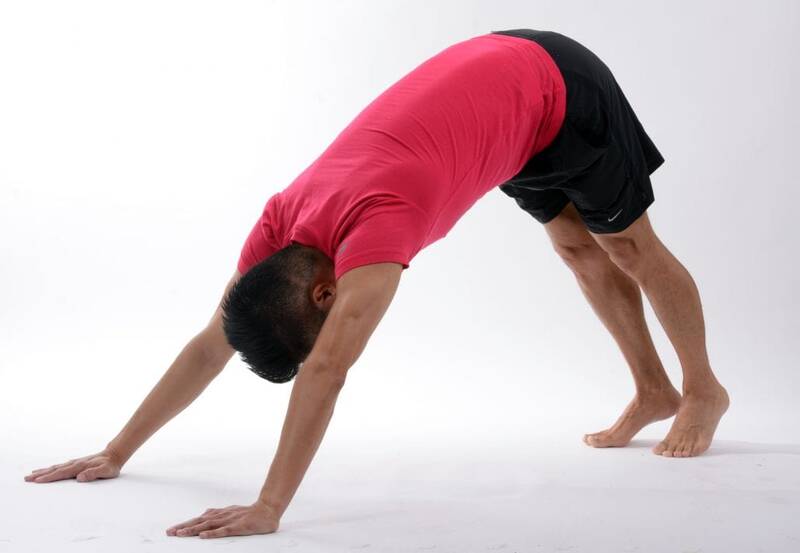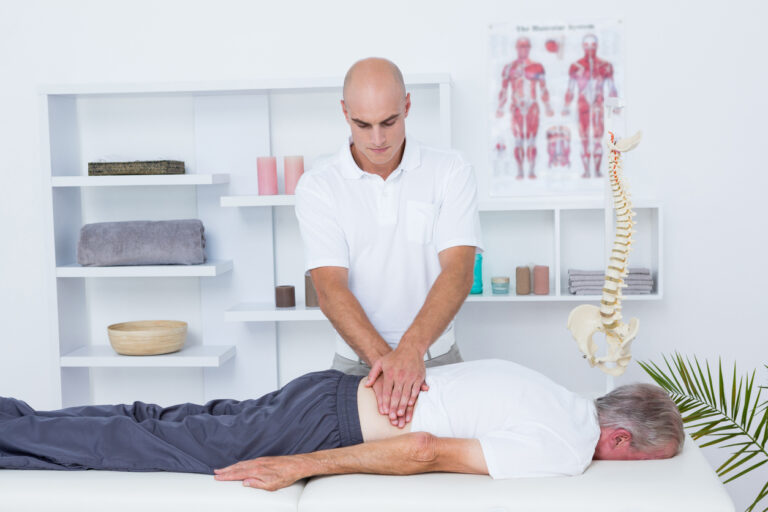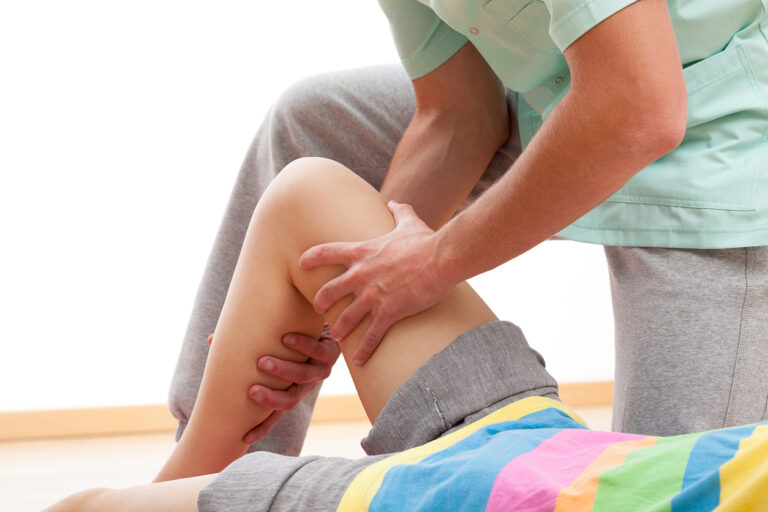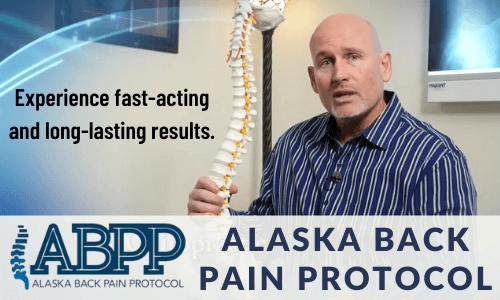If you suffer from a herniated disc, you know about the pain it causes. However, did you know physical therapy can safely treat it?
Although surgery is a possible method of treatment for a herniated disc it is not the only one. A number of conservative therapies like Physical Therapy can often effectively treat the condition without resorting to other more drastic measures.
How Effective Is Physical Therapy for a Herniated Disc?
If you have a herniated disc and you are suffering from a painful condition (like sciatica or something else), you’ll want to know what is the best way to treat it. There are a number of options available to you. One is physical therapy. Of course, before deciding on physical therapy you’ll want to know how effective it is.
To answer this concern, let’s look at another study. This scientific study by The Journal of Manipulative and Physiological Therapeutics on Science Direct found “that traction, ultrasound, and LPL therapies were all effective in the treatment of this group of patients with acute LDH.(1) LDH is an abbreviation for lumbar disc herniation. And all three of those types of treatment are types of passive physical therapy (which we will discuss later).
When you have a herniated disc, the disc ruptures allowing the internal gel-like substance of the disc to extrude. The extruding gel may come into contact with a nerve. When this happens, the patient will likely suffer a number of symptoms (local pain, pain radiating along the nerve, and tingling sensations in different parts of the body).
If this happens to the sciatic nerve, you will likely be diagnosed with sciatica. Your first thought may be, how can I get rid of the pain? Although surgery is an option, it is usually avoided until all conservative therapies have been tried. This brings us back to physical therapy.
The idea behind physical therapy is that you can treat an ailment by strengthening certain muscles in the body. In the case of a herniated disc in the lower spine, it all goes back to spinal alignment and posture. An incorrect posture or poor spinal alignment can often result in issues like disc problems.
A qualified physical therapist will be able to start you on a regimen of exercises to strengthen the muscles he/she has determined are at the core of your problem. Take, for example, the case of a herniated disc causing sciatica. The muscles the therapist will focus on will be those core muscles around the lower back where the disc is located. Stronger muscles will be able to support the spine better. They will, to a certain degree, fix your spinal alignment issue and help you maintain a better posture.
Once you solve the spinal alignment and posture issue, your body will be able to deal with the disc injury naturally. The excess gelatin-like substance will be reabsorbed and the disc, itself, should heal.
Physical Therapy for a Lower Back Herniated Disc
This should be obvious, but it’s worth stating: don’t try to take up and start doing PT exercises on your own without professional guidance. First of all, when it comes to a herniated disc, not all physical therapy exercises are created equal.
You don’t want to just do any type of exercise to treat a herniated disc. You need to do specific exercises that target the correct muscles. Of course, physical therapy isn’t limited to simply exercise. There are other forms of PT such as those therapies we mentioned above that fall under the heading of passive physical therapy.
Passive physical therapy techniques include:
- Hot and Cold Therapy
- Transcutaneous Electrical Nerve Stimulation (TENS)
- Spinal Traction
- Laser Therapy
- Ultrasound Treatments
- And Deep Tissue Massage
All of these are called passive because the patient doesn’t have to engage or exert themselves. If your herniated disc is causing sciatica, for example, and you are seeking sciatica pain relief with massage, you simply lie down and let the therapist massage your muscles for you.
Physical Therapy Exercises and Stretches for a Herniated Disc
The type of PT exercises you will be prescribed will depend upon the location of the herniated disc. If you are suffering from sciatica, for example, it is most likely the result of a herniated disc in the lower spine.
The most effective PT exercises for treating such will differ from the exercises you might use to treat a herniated disc in the neck. One system of exercise often used in physical therapy is yoga. Yoga is an ancient form of stretching developed in India. It consists primarily of different poses that are maintained for a certain amount of time to develop, strengthen, and stretch specific muscles in the body.
Again, not all yoga poses will work effectively on a herniated disc in the lower spine. In fact, some may even cause pain – and those should be avoided. Your yoga instructor should know which poses are good for you and which are not.
Some of the best yoga poses for a lower back herniated disc include:
Pigeon Pose
Start by placing a folded towel beneath your bottom and right thigh. Then, cross your right leg in front of you. Stretch the leg out behind you. Try to bend forward over your right leg. Hold for a short time, then switch sides.
- Pigeon on a Chair: If you can’t comfortably lie on the floor, you can try this stretch. Start by sitting in a comfortable chair. Set your right ankle on the top of your opposite knee. Now, lower your right knee in the direction of the floor, pressing down on it with your hand, if you can.
- Cobra: Start by lying flat on your stomach with your open palms placed under both shoulders. Hold your feet together and point them away from you. Now, push your upper torso upward from the ground, while keeping your hips placed on the floor.
Another excellent physical therapy stretch to use to fight a lower back herniated disc is the
Piriformis Stretch
- Warm Up: Lie on the floor (or bed, if necessary) on your back with your legs extended in front of you. Pull one leg up to your chest. Hold it while counting to 15. Lower it to the floor and repeat using the other leg. Then, do the same with both legs at once.
- Stretch: While lying on your back, bend both knees. Draw your right leg upward and place your right ankle on your left knee. Carefully pull your right knee in the direction of your left shoulder. Hold and count for 30 seconds. Release and switch sides.
Of course, there are other types of exercise that are helpful for people with a herniated disc besides simple stretches. Some of these exercises include:
- Swimming
- Walking
- Water Aerobics
- Foundation Training
After a while, provided your physical therapist approves, you may be able to incorporate more advanced exercise forms like bicycling, weight-lifting, and others.

Physical Therapy for a Herniated Disc in the Neck
As stated above, one of the most common places someone might develop a herniated disc is in the lower spine. However, that is not the only place where herniated discs can occur. Another, relatively common location is in the neck.
Although a herniated disc in the neck will not cause sciatica-like one in the lower back may, it can lead to other problems. Fortunately, research shows that it, too, can be treated with physical therapy and chiropractic techniques.
A study in the Journal of Orthopaedic and Sports Physical Therapy found that cervical traction and manipulation of the thoracic spine helped reduce pain and the level of disability in patients suffering from mild cervical compressive myelopathy caused by a herniated disc. (2)
So, if you have a herniated disc in your neck, it’s still best to start with conservative treatment options.
Physical Therapy and Chiropractic for Herniated Disc
One of the benefits of physical therapy is that if you maintain your given exercise routine, you will likely be able to not only relieve your pain, but also keep it from coming back. Physical therapy is one of the most effective and versatile forms of conservative treatment when it comes to dealing with musculoskeletal and nervous issues.
Another great form of conservative treatment is chiropractic care. Chiropractors are experts in the musculoskeletal system and the nervous system. They, too, have a vast selection of techniques and tools at their disposal that can often help with issues like herniated discs.
And the great thing about physical therapy and chiropractic care is that they go hand-in-hand. Not only do they work well together, but each also amplifies the effectiveness of the other. Basically, it’s a case of the whole being greater than the sum of its parts.
The Prevalence of Herniated Discs Causing Other Conditions
A herniated disc can occur anywhere along the spine. The most common locations are those in the lower (or lumbar) spine. Wherever it is, a herniated can often lead to other painful conditions. One such condition is sciatica. Let’s briefly look at two studies that found disc issues to be the source of sciatica pain.
The New England Journal of Medicine published a study in 2015 about sciatica in which they stated that, with respect to cases in which pain extends through the buttock along the sciatic nerve, “nearly 85% of cases are associated with a disk disorder.”(3)
Another study published by the BMJ also stated that “In about 90% of cases sciatica is caused by a herniated disc with nerve root compression.”(4)
Of course, there are other common musculoskeletal conditions that can be caused by a herniated disc, but let’s leave that discussion for now and address physical therapy as a form of treatment.
Conclusion
A herniated disc can be truly painful. But there are non-invasive ways of treating it. One of the best and most widely used is physical therapy. It’s a great, effective conservative means to deal with painful conditions like herniated discs.
Of course, with all the great benefits that physical therapy provides, we at Better Health Alaska have recruited and hired a team of highly-qualified physical therapists for our office. In fact, we’ve been providing physical therapy for over twenty years. If you suffer from a herniated disc or other painful condition, contact us and we’ll set you up with an appointment to get you on the way to recovery as quickly as possible.
To learn more about your condition, visit your local physical therapist at Better Health Anchorage in Alaska.









